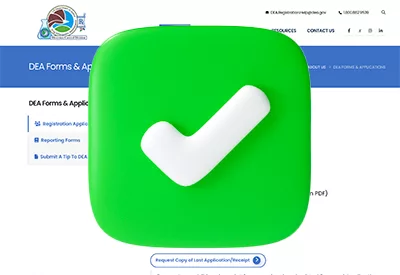Evidence-Based Options for Treatment-Resistant Depression in Older Adults
A 72-year-old woman presents to your clinic due to worsening depression. Previously she was on sertraline but switched to venlafaxine 10 weeks ago. She still does not feel better—what should you do next?
Treatment-resistant depression (TRD) is common in depressed older adults, with over 50% not responding to initial treatment (Lenze EJ et al, Lancet 2015;386(10011):2404–2412). TRD is defined by the failure of two or more adequate antidepressant trials (typically from different classes). Lack of improvement with psychotherapy, electroconvulsive therapy (ECT), or transcranial magnetic stimulation (TMS) would also support this diagnosis. It is helpful to differentiate TRD from “pseudo-resistance” caused by inadequate medication dosing (not reaching the target dose for depression for at least four weeks), poor medication adherence, or an incorrect diagnosis.
TRD in older adults is also known as treatment-resistant late-life depression (TRLLD). It leads to worse prognosis, disability, poor medical outcomes, and cognitive decline (Blaszczyk AT et al, Drugs Aging 2023;40(9):785–813). There is a vicious loop where depression accelerates biological aging and predisposes patients to a variety of medical issues (eg, depressed individuals have a 45% higher risk of stroke), and medical issues increase the risk of LLD. Various biological aging factors that contribute to depression include increased vascular disease, inflammation, and amyloid accumulation (Alexopoulos GS, Transl Psychiatry 2019;9(1):188). Certain psychosocial stressors are also more common in older adults, including social isolation, financial instability, unemployment, elder abuse, disability, and chronic pain (for more on depression in older adults, see CGPR OctNovDec 2022). Here, we review the evidence-based treatment strategies for TRLLD.
Medication options
First-line treatment options
Antidepressants are more effective than placebo for LLD, although certain subsets of LLD (eg, depression related to dementia) have worse responses to antidepressants compared to others (eg, recurrence of early-onset depression; depression related to inflammation) (Alexopoulos, 2019). All antidepressants are effective, but common first-line agents are SSRIs (eg, sertraline, escitalopram) or SNRIs (eg, duloxetine, venlafaxine). You should reserve paroxetine, TCAs, and MAOIs for more severe cases due to their side effects. If used, nortriptyline and selegiline are the most common choices amongst TCAs and MAOIs respectively (Blaszczyk et al, 2023). Nortriptyline (25-150 mg/day) has the most evidence among TCAs due to its safety profile, whereas selegiline offers the flexibility of both oral (20–60 mg/day) and transdermal patch (6–12 mg/24 hours) formulations.
Second-line treatment options
Unfortunately, there is limited evidence from controlled trials to guide next steps after older adults fail first-line treatment. Clinicians typically maximize the dosage of the current antidepressant before considering a switch or augmentation. The 2023 OPTIMUM trial compared the most common augmentation strategies (adding aripiprazole, bupropion, or lithium) to switching antidepressants (to bupropion or nortriptyline) for TRLLD. Aripiprazole augmentation had the best overall results, although all strategies showed some benefit. Bupropion was associated with an increased risk of falls compared to aripiprazole. A different RCT for low-dose aripiprazole augmentation for TRLLD also showed benefit (Lenze EJ et al, N Engl J Med 2023;388(12):1067–1079).
Another promising option for TRLLD is methylphenidate augmentation. Combining an SSRI with methylphenidate can be well-tolerated and may lead to higher remission rates, but the benefit appears to fade with time (Alexopoulos, 2019; Blaszczyk et al, 2023).
Despite common usage in practice, there are no studies on mirtazapine for treatment of TRLLD. Similarly, there are theoretical benefits, but not much data, to support most supplements or alternative therapies, such as L-methylfolate or bright-light therapy. Limited data (although not specific to TRLLD) support triiodothyronine or S-adenosyl-L-methionine (SAMe) augmentation (Blaszczyk et al, 2023).
 IV ketamine has emerged as a potential treatment for TRLLD, but the data are still evolving. A recent small pilot clinical trial showed good tolerability and improvements in depression and executive functioning (Oughli HA et al, Am J Geriatr Psychiatry 2023;31(3):210–221). However, other reports have had mixed results, and a different RCT of esketamine augmentation for TRLLD failed to show a statistical difference between esketamine and placebo (Blaszczyk et al, 2023). See table for a summary of the evidenced-based treatment options for TRLLD.
IV ketamine has emerged as a potential treatment for TRLLD, but the data are still evolving. A recent small pilot clinical trial showed good tolerability and improvements in depression and executive functioning (Oughli HA et al, Am J Geriatr Psychiatry 2023;31(3):210–221). However, other reports have had mixed results, and a different RCT of esketamine augmentation for TRLLD failed to show a statistical difference between esketamine and placebo (Blaszczyk et al, 2023). See table for a summary of the evidenced-based treatment options for TRLLD.
Therapy and lifestyle interventions
Psychotherapy
While psychotherapy may not be as effective as a standalone treatment for severe LLD, it can be a valuable adjunctive treatment. The best evidence supports problem-solving therapy and cognitive behavioral therapy, with some evidence for interpersonal therapy (Raue PJ et al, Curr Psychiatry Rep 2017;19(9):57). There are a variety of small studies showing promising results that look at therapies prioritizing treatment adherence, and therapies tailored to patients’ cognitive abilities and medical co-morbidities (Raue et al, 2017). Despite the potential benefits, limited access to specialized therapies continues to be a barrier in using these treatments.
Lifestyle interventions
In addition to therapy, lifestyle interventions can help older patients with depression. No formal trials recommend specific dietary interventions for TRLLD, but there has long been a correlation between the “Western diet” and sugary drink intake with depression. Alternatively, the Mediterranean diet and tea drinking are associated with lower risk of depression. Exercise also has a moderate effect as an adjuvant treatment for TRD in general (Blaszczyk et al, 2023).
Neuromodulation
Neuromodulation is also an option for TRD, particularly if patients cannot tolerate medications.
Transcranial magnetic stimulation (TMS)
Improvements in TMS have allowed it to target deeper brain structures, increasing its effectiveness in LLD (Alexopoulos, 2019). A small RCT of 52 patients assessing the efficacy of bilateral rTMS for TRLLD showed 40% of participants in the rTMS group achieved remission, versus 14.8% in the sham group (Blaszczyk et al, 2023).
Electroconvulsive therapy (ECT)
ECT is still the gold standard for patients who need urgent improvement, such as those with severe psychosis, catatonia, or life-threatening medical complications. ECT is the most effective treatment for LLD, and maintenance ECT combined with pharmacotherapy reduces the risk of relapse in TRD (Alexopoulos, 2019). For more on ECT in severely depressed patients, see CHPR Apr/May/June 2023.
Novel therapies
Novel therapies on the horizon targeting specific sub-types of LLD include:
- Neurobiology-based psychotherapy
- Adding dopamine agonists like pramipexole
- Using anti-inflammatory agents, cytokine inhibitors, and statins
(Source: Alexopoulos, 2019)
After confirming your patient has major depressive disorder, is medication adherent, and is on the maximum dose of venlafaxine, you consider adding adjuvant aripiprazole. After discussion with the patient, you add adjuvant aripiprazole.
Carlat Verdict
Reevaliate diagnoses and identify and address any barriers to treatment before normally diagnosing TRD. Evidence based strategies for treating TRD in older adults include switching antidepressants, augmentation with aripiprazole, bupropion, or lithium, and referring patients to TMS or ECT.


_-The-Breakthrough-Antipsychotic-That-Could-Change-Everything.webp?t=1729528747)



